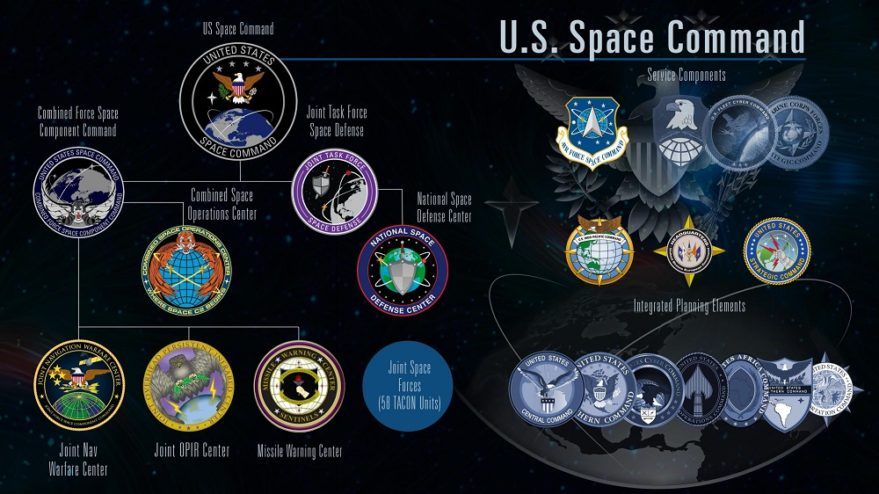China, Russia and the New Space Race
Article by James Stavridis April 12, 2021 (bloomberg.com)
• Russia and China are contesting the US militarily, from the Arctic to the Baltics to the South China Sea. A few weeks ago, the two nations agreed to build a joint research station on the Moon. In an online statement, the China National Space Administration said the base would be open to “all interested countries and international partners”. But if you look at recent Russian and Chinese space operations, they have a distinctly military bent. And the idea of general political and military cooperation between the two is gaining speed, from massive war games on the Siberian border to warship deployments in the eastern Mediterranean and the North Atlantic.
• Washington needs to understand the strategic approach being taken by both of these US rivals in space. The Center for Strategic and International Studies and the lesser-known Secure World Foundation have recently released reports highlighting a cluster of Russian activities that have caught the attention of the US intelligence community. These include significant antisatellite missile tests throughout 2020; flights of Russian spacecraft very near US spy satellites; tests of projectile launches in space; and fraying ties with the US in civilian and scientific space cooperation.
• As the supreme allied commander of the North Atlantic Treaty Organization, this article’s writer, James Stavridis, spent a good deal of time with the then-Russian ambassador to the alliance, Dmitry Rogozin. Rogozin went on to serve as deputy prime minister in charge of all Russian defense and space industries. Since 2018, Rogozin has been the head of Roscosmos, the equivalent of NASA. Given his strong defense background, Rogozin brings a military thrust to the Russian space program.
• Ten years ago, Rogozin told Stavridis that Russia’s military future was in space. In 2014, Rogozin mocked the US space program on Twitter as needing a trampoline to bring astronauts to the International Space Station. After a successful commercial launch by SpaceX in 2020, Elon Musk tweeted back, “The trampoline is working.”
• China doesn’t have the decades-long history that Russia has in the space domain, but the Chinese are accelerating rapidly. China had landed a lunar module on the Moon, returning soil samples. It launched a Mars probe that is currently orbiting the red planet. And it has plans to build a Moon base, along with Russia. All of this is part of an emerging “space culture” in China.
• Chinese efforts in space have an increasingly military feel to them as well. China has 363 satellites in space, second only to the U.S. (with more than 1,300). The Chinese have been conducting anti-satellite tests for nearly two decades, including missiles and lasers. They have devoted considerable effort to sharpening offensive cybertools that can go after US space assets. The Chinese have also fired more rockets into space than any other country for three years straight.
• As Russia and China come together to operate in the cosmos, their overall military and strategic cooperation will increase as well. The fledgling US Space Force must be part of a US response. America needs a small but elite US Cyber Force working alongside our allies, much as China and Russia intend to do. And Washington needs a coherent plan for private-public cooperation and to prioritize defense dollars for space.
• [Editor’s Note] The author of this article, retired Admiral James Stavridis, is intent on associating Russia with China’s CCP. And where is he now that he has retired from the US Navy? He is an operating executive with the Carlyle Group, a notorious bastion of the deep state elite trying to stoke a war between the US, China and Russia. China has invited “all interested countries and international partners” to join them in the development of a Moon base. After the deep state stopped utilizing Russian space rockets to bring Americans to the International Space Station in favor of their darling, Elon Musk, why wouldn’t Russia be interested in another Moon program? And didn’t the Russian navy just work with the US Navy to bottle up the Evergreen container ship ‘Ever Given’ in the Suez Canal, which reportedly contained not only trafficked humans but weapons of mass destruction?
What is really going on is a war between the deep state and non-compliant Alliance countries like Russia. Deep state shills like Admiral Stavridis only want to demonize Russia and stir up World War III to give the deep state a path to total control over the planet and the solar system. Unfortunately, Administrator Biden is also a deep state lackey who supports this evil agenda. It is up to the white hats in the US military to excise the deep state trolls from its ranks, completely remove the deep state from power, and set the planet on a course of peace and prosperity – including our expansion into space to stand alongside our space cousins – which the deep state has actively prevented since WWII.

Russia and China are looking hard at how they should allocate defense spending to

contest the U.S. militarily, from the Arctic to the Baltics to the South China Sea. Near the top of both national shopping lists are military operations and assets in space, and the most intriguing aspect of their decision to look to the stars is that they are going to do it together.
Most notably, the two nations agreed a few weeks ago to build a joint research station on the moon. In an online statement, the China National Space Administration said the base would be open to “all interested countries and international partners,” which sounds relatively benign. But if you look at recent Russian and Chinese space operations, they have a distinctly military bent. And the idea of general political and military cooperation between the two is gaining speed, from massive war games on the Siberian border to warship deployments in the eastern Mediterranean and the North Atlantic.
 What should the U.S. be doing?
What should the U.S. be doing?
First, Washington needs to clearly understand the strategic approach being taken by both of these rivals, who are now peer competitors, at least in space.
We should begin with Russia, which has had a very long and successful track record in space operations dating back to Soviet times. The Center for Strategic and International Studies and the lesser-known Secure World Foundation have recently released reports highlighting a cluster of Russian activities that have caught the attention of the U.S. intelligence community.
These include significant antisatellite missile tests throughout 2020; so-called close aboard flights of Russian spacecraft very near U.S. spy satellites; tests of projectile launches in space; and fraying ties with the U.S. in civilian and scientific space cooperation. (The two nations have previously worked together closely, especially on the International Space Station.)
FAIR USE NOTICE: This page contains copyrighted material the use of which has not been specifically authorized by the copyright owner. ExoNews.org distributes this material for the purpose of news reporting, educational research, comment and criticism, constituting Fair Use under 17 U.S.C § 107. Please contact the Editor at ExoNews with any copyright issue.



 posed by Russia and China, claiming the right of self-defense as America and its allies expand their space economies and look to permanently return to the moon.
posed by Russia and China, claiming the right of self-defense as America and its allies expand their space economies and look to permanently return to the moon.




